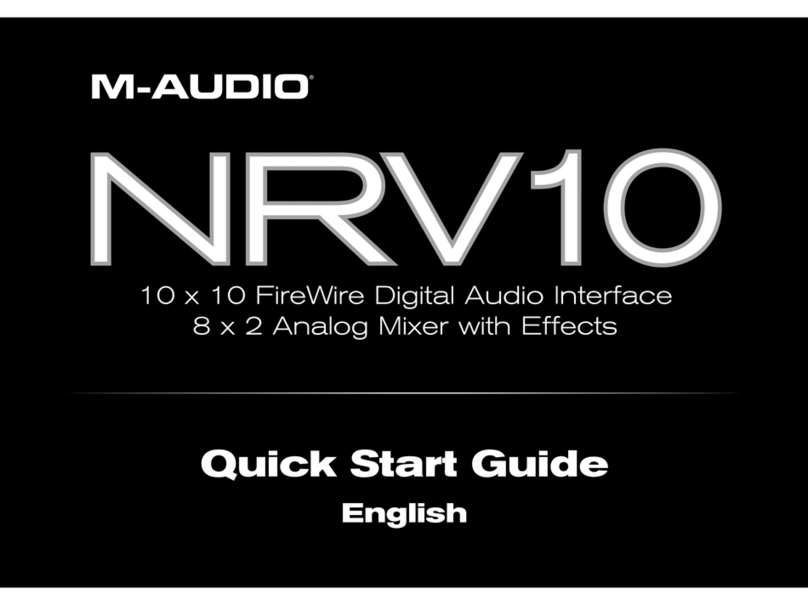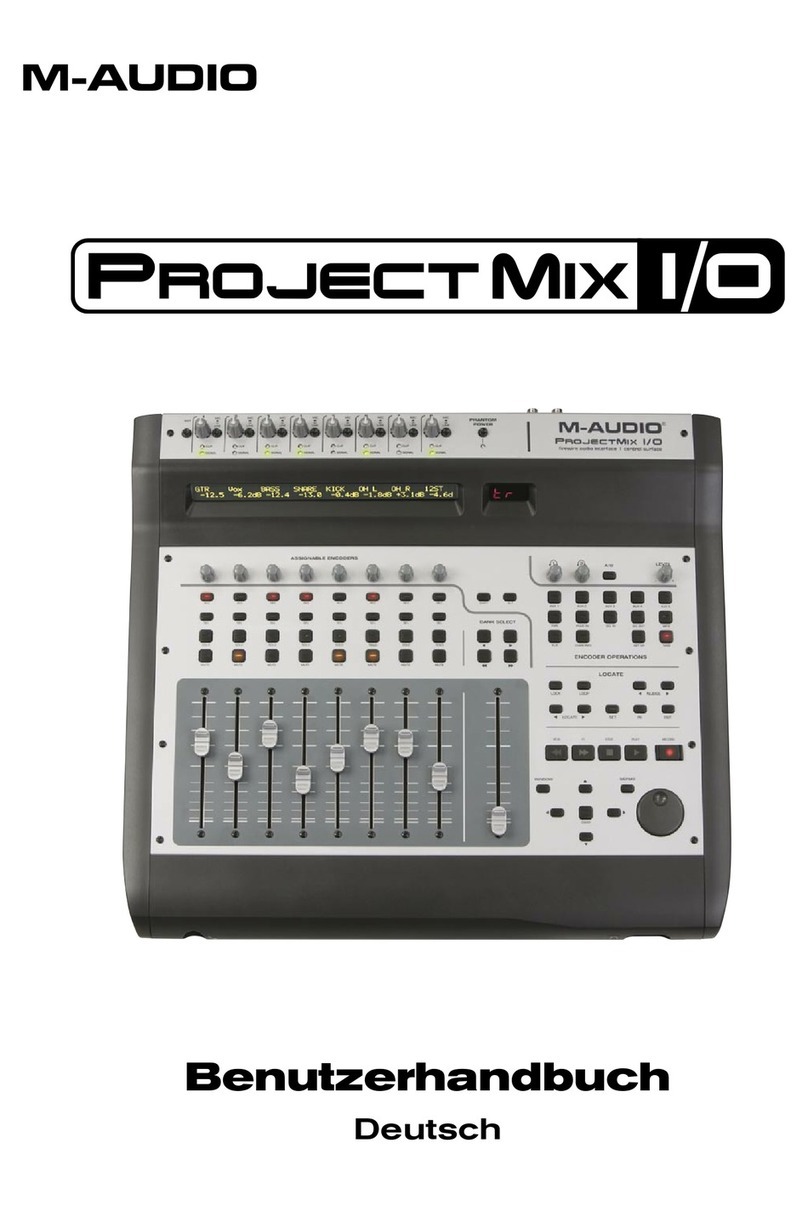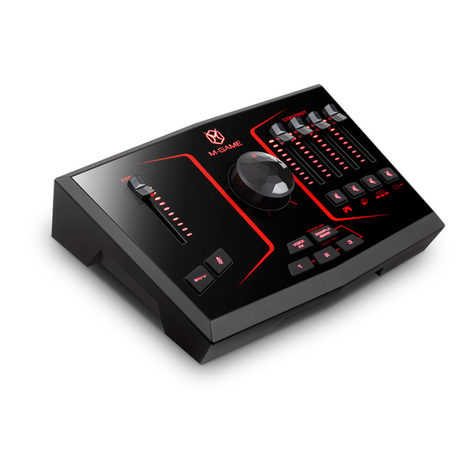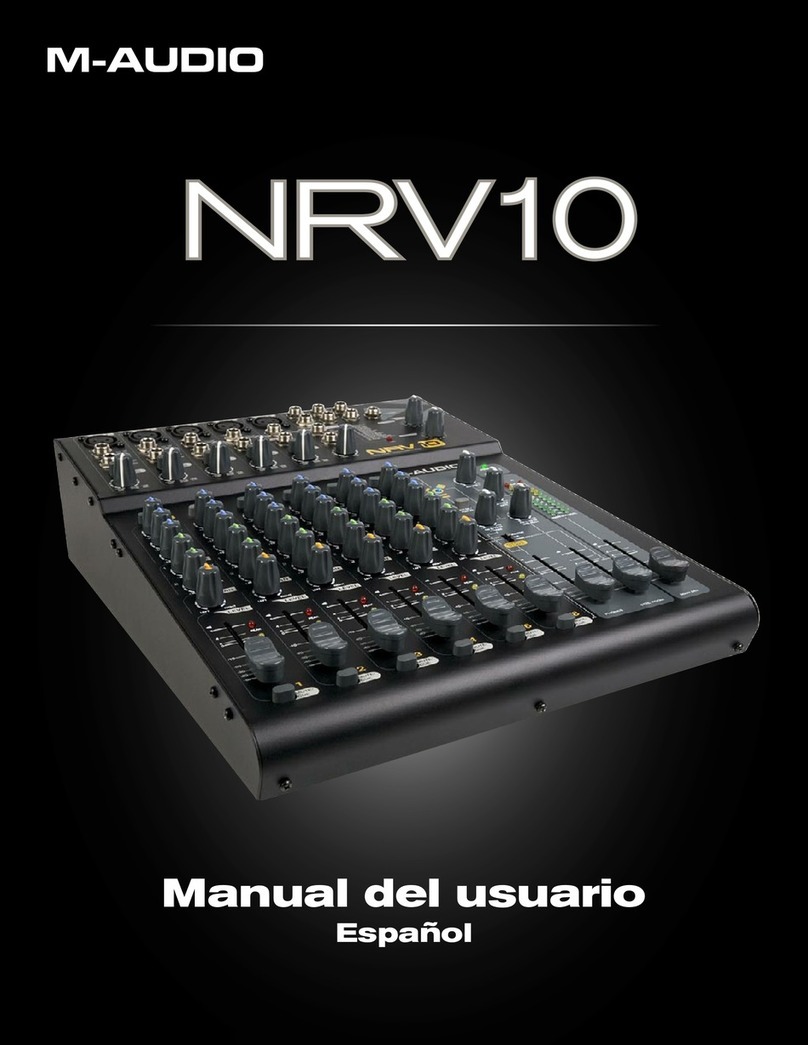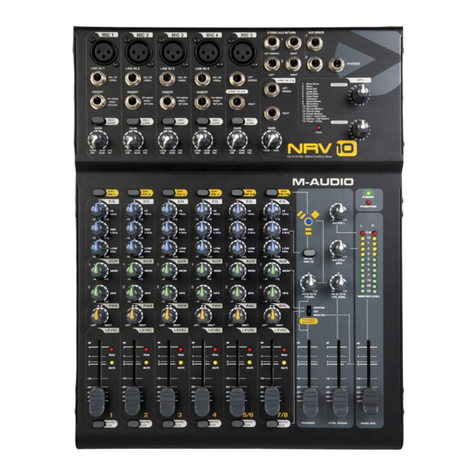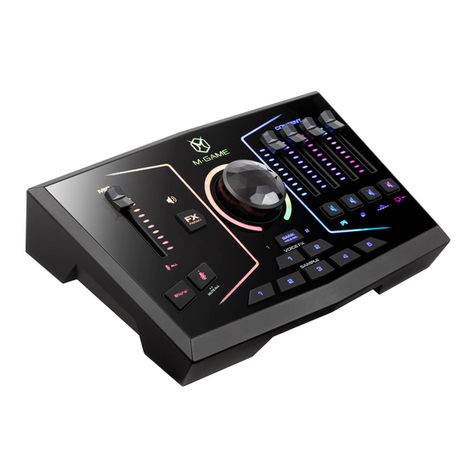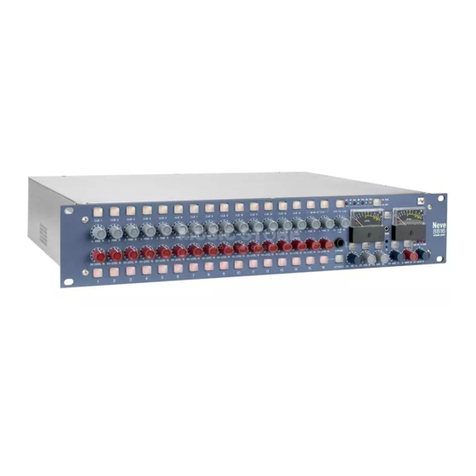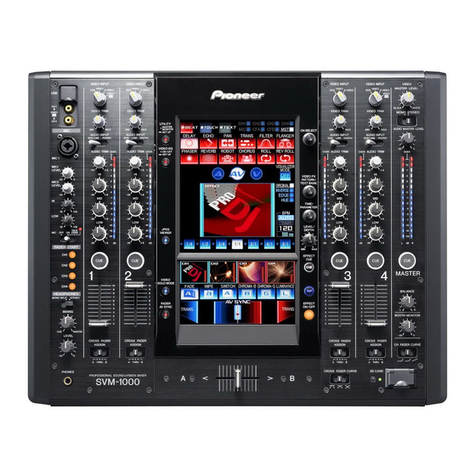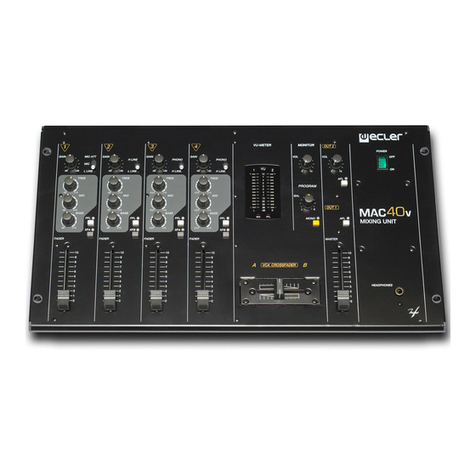8
Setting Up
Plugging in Line Level Instruments
When first setting up, you should decide which instruments
you want to be panable and which should run into the unity
gain inputs. We recommend that you refer to the “Typical
Set-Up - Fig. 2”diagram.
For the instruments that are connected to inputs 1 through
12, make sure that they are set to their maximum volume,
and control the mix level from the channel gain pots. If you
see an individual channel’s Clipping LED turn on, turn that
instrument down slightly. Levels of instruments connected to
the unity gain stereo pairs (13 through 18) will have to be
controlled from the individual instruments. If you have MIDI
volume controllable instruments, much of this level adjust-
ment can be done with your sequencer or MIDI mixing con-
troller.
You will also need to decide how to assign effects and sends.
If you are using MicroMixer for live performance, you will
probably want to use one of the sends as a monitor mix. If
you are using MicroMixer in a studio, you will probably want
both sends available for effects.
Setting Up the Outputs
If you are using the MicroMixer in live performance, you will
probably want to connect the Left and Right Outs to the
input(s) of a power amplifier and use one of the sends as an
on-stage monitor mix. If you are using MicroMixer in a studio
application, you will probably plug one output (for mono) or
both outputs (for stereo) into one input (for mono) or two
inputs (for stereo) on your mixing board.
The output levels of MicroMixer are controlled by the front
panel Left and Right Master Level pots. When set to 9
o’clock, MicroMixer has unity gain. This is the best setting for

